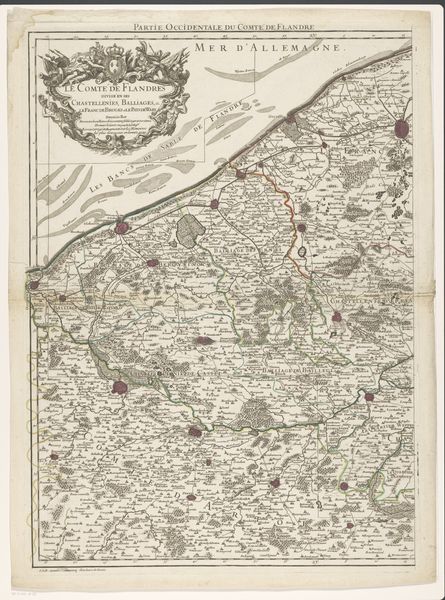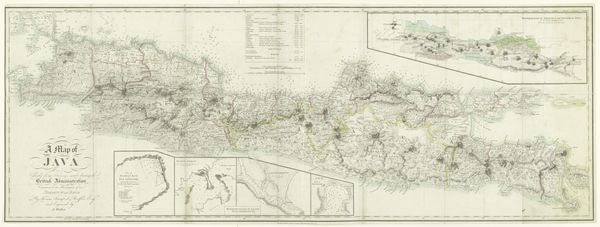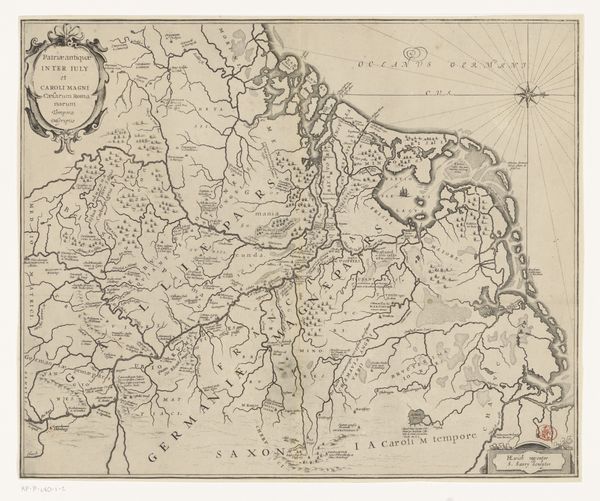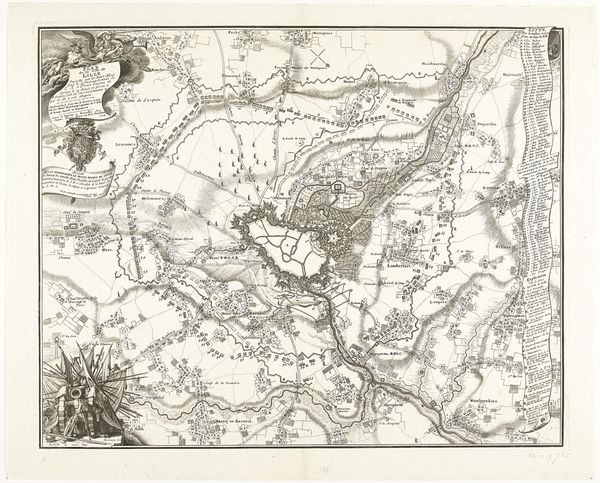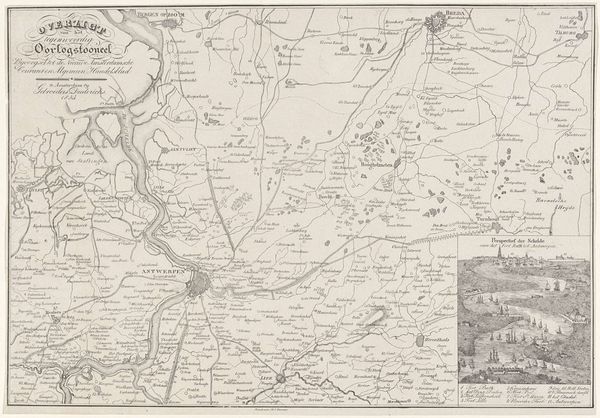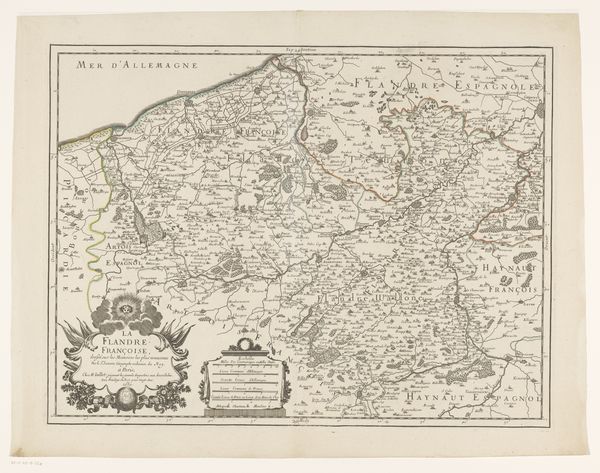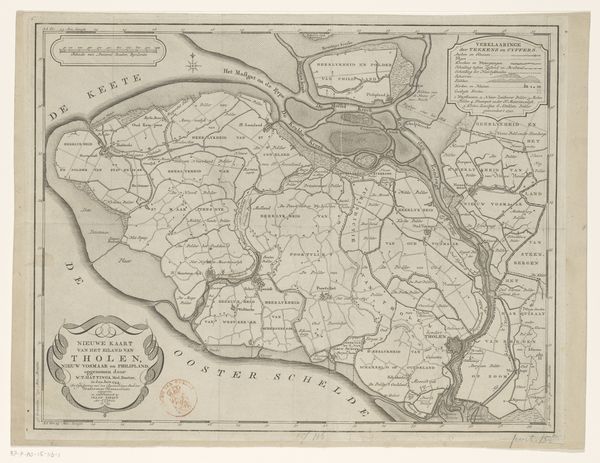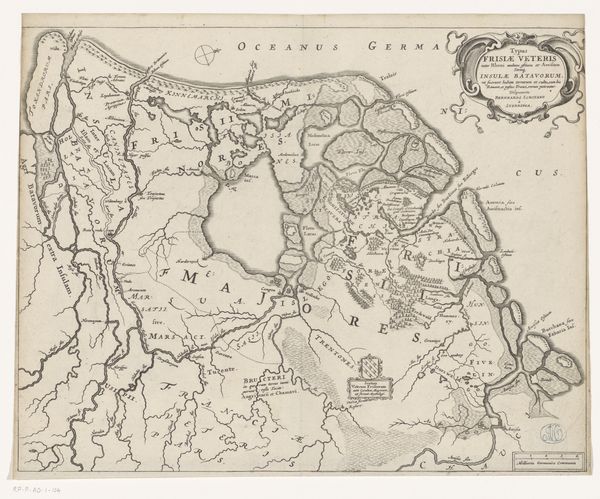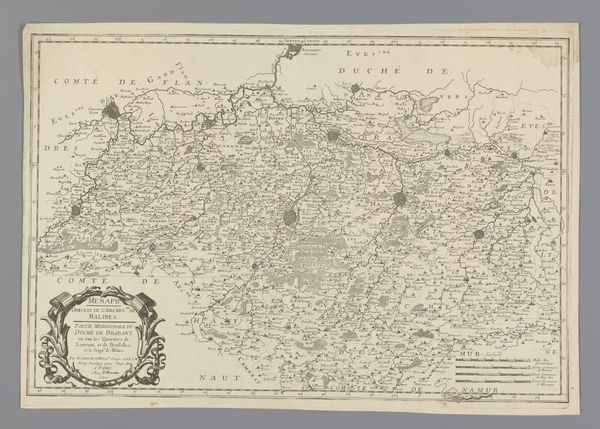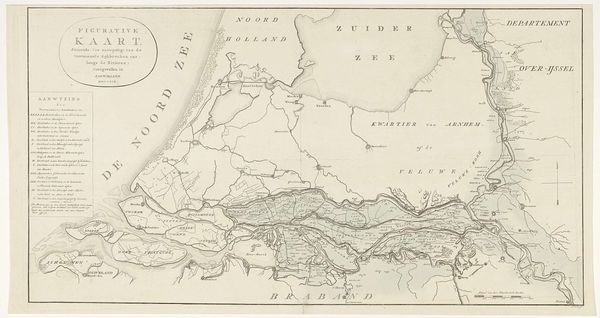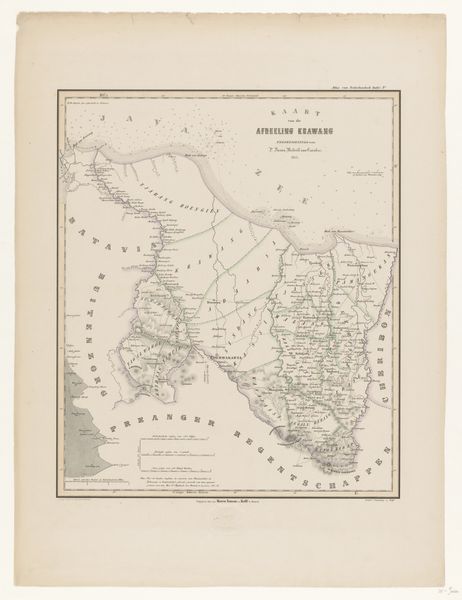
drawing, lithograph, print, ink, pen
#
drawing
#
lithograph
# print
#
pen illustration
#
ink
#
geometric
#
romanticism
#
pen
#
cityscape
#
decorative-art
Dimensions: height 546 mm, width 292 mm
Copyright: Rijks Museum: Open Domain
Editor: This is "Kaart van de spoorweg tussen Hannover en Bremen," a lithograph from after 1847, likely intended for public use. It is a rather detailed railway map connecting the two cities; at the top and bottom are architectural renderings of each city's train station and their schematics. It feels very industrial, in a way. What catches your eye? Curator: What I see is a document deeply embedded in the material realities of the mid-19th century. This isn't just a map; it's a promotional artifact intertwined with the Industrial Revolution's grasp on society. Editor: Promotional, how so? Curator: Consider the labor involved. The lithographic process meant multiple hands and skills to create these maps at scale. And what was this labor in service of? Selling the railway itself, normalizing train travel, and knitting together commerce and culture between Hannover and Bremen. Look at the meticulous detail. The pen and ink create very clear visual messaging. The architectural drawings celebrate not just transit, but progress. How might the labor invested shape our appreciation? Editor: I guess I hadn't thought about it as trying to "sell" me on train travel. I was focused on the artistry, which is beautiful! But the reality of promoting railways through printed material, mass production via lithography... it all shifts the focus from the aesthetic to the functional and economic drivers. Curator: Exactly. The map’s beauty is not separate from the conditions of its creation. It’s directly related to how resources were channeled to facilitate these industrial advancements, these social realignments. It’s decorative art meets infrastructural imperative, inextricably linked through labor. Editor: So, beyond being visually appealing, this piece functions as an indicator of the societal shift toward industry and mass production that would reshape Europe forever. It has less to do with romanticism and more to do with material and functional imperatives. Thanks, that really changes how I look at it.
Comments
No comments
Be the first to comment and join the conversation on the ultimate creative platform.
